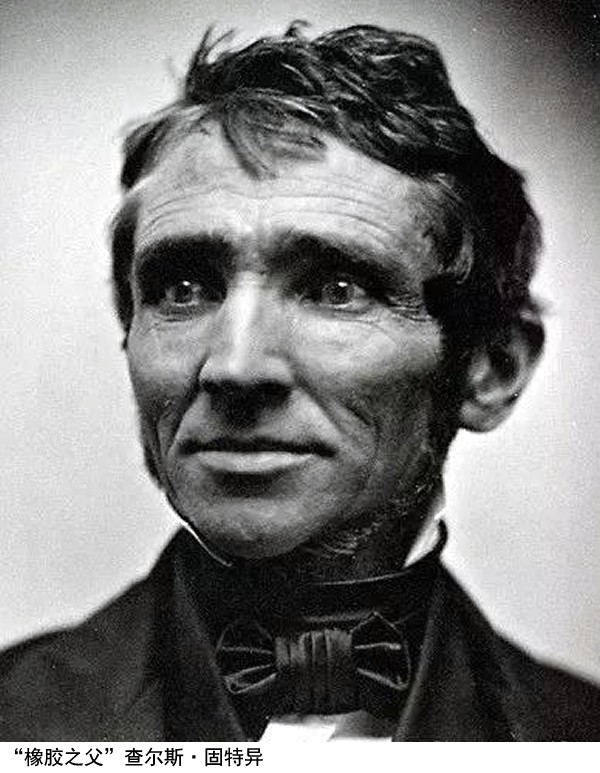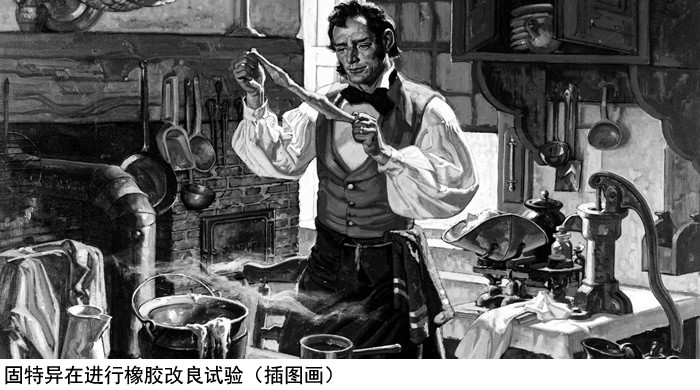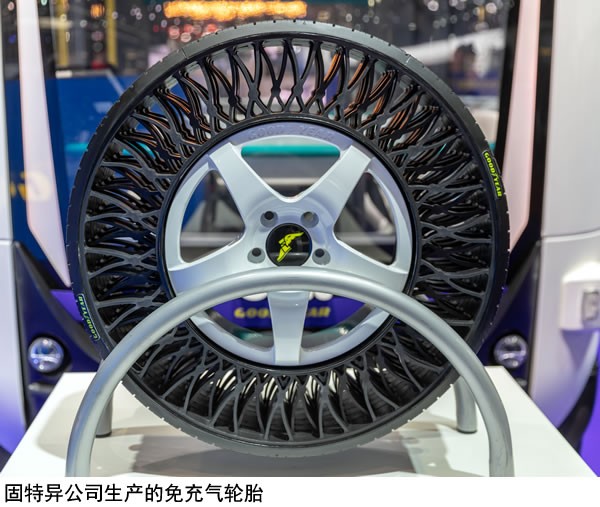
Most Of The Tires We Use Today Are Vulcanized Rubber Products. Although He Owned The Invention Right Of Vulcanized Rubber, But Because Of Repeated Infringement, He Ended Up Destitute.
In Jail For Rubber Research Debt
Charles Goodyear Was Born On December 29, 1800, In New Haven County, Connecticut, The Oldest Of Six Children In A Small Workshop Family.
Goodyear Left Home In 1814 To Study Hardware Manufacturing In Philadelphia, Then Returned To New Haven At The Age Of 21 To Make Metal Objects And Farm Implements In His Father’s Factory.
Goodyear Married In 1824 And Moved To Philadelphia, Where He Opened A Hardware Store And Made Farm Implements. At That Time, Most Farm Tools In The United States Were Imported From Britain. There Were Very Few Farm Tools Produced In The United States. Goodyear Made A Lot Of Money From Farm Tools Manufacturing. But The Good Times Didn’t Last Long. Goodyear Closed His Hardware Store In 1830 After A Stomach Attack And A Bad Economy.
After Closing The Hardware Store, Goodyear Has Been Looking For New Business Opportunities. In 1831, He Came Up With The Idea Of Making A Life Buoy Out Of Rubber And Approached The Roxbury Rubber Company For Cooperation.
As Early As 1736, France First Reported The Situation Of Natural Rubber In South America, Including The Method Of Collecting Latex And The Use Of Rubber In The Local Situation. Since Then, There Have Been People To Study What To Make From Rubber.
Rubber Products Were Mostly Experimental And Almost Unusable, Softening With Heat And Breaking With Cold, And Many Of Roxbury Rubber’s Products Were Returned. Although Company Manager Haskins Was Interested In Goodyear’s Idea, His Own Company Faced Bankruptcy And Was Unable To Invest In New Products. So Goodyear Decided To Study How To Improve The Properties Of Rubber Itself, Allowing It To Make Products That Could Be Used.
Goodyear, Who Had No Income For Four Years But Had Invested Heavily In Rubber Research, Supported His Wife And Nine Children By Borrowing And Pawning His Property. When He Couldn’t Pay His Debts, His Creditors Took Him To Court. He Was Arrested And Sent To Prison. Finally, His Father And Brother Paid Off His Debts And He Was Released From Prison.
The President Of The United States Encouraged Him To Invent
Soon After His Release From Prison, Goodyear Moved With His Family To New York To Continue His Research In Rubber. Once He Added Magnesium Oxide And Lime Water To The Melted Rubber, Which Produced A Beautiful White Mixture That Made The Natural Rubber Lose Its Viscosity. When The News Got Out, He Got The Attention Of The World.
He’s Getting There. But One Day, He Inadvertently Put A Drop Of Weak Acid On The White Rubber, Which Immediately Softened, And His Hopes Of Success Were Dashed.
Undaunted, Goodyear Believes There Must Be A Way To Improve Natural Rubber, He Just Hasn’t Found One Yet. U.s. President Andrew Jackson (1767-1845) Wrote To Him To Encourage His Research.
Later, He Made Some Products By Soaking Synthetic Natural Rubber In A Nitrate Solution, Which Made The Rubber Surface Lose Its Viscosity. The Patent Application For This Invention Was Granted By The United States Patent Office On June 17, 1837, Patent Number 240.
With A Partner, He Set Up A Factory That Used The Patented Technology To Make Life Preserver, Rubber Shoes And Other Products. He Later Built A Factory On Staten Island In New York City And Moved His Family There. His Business Is Booming And His Wealth Is Rolling In. But The Financial Crisis Of 1837 Left Him Destitute Overnight.
Goodyear Borrowed Some More Money From Haskins, Restarted His Business In Boston, And Invented A Large Machine For Mixing Rubber. By This Time, The Quality Of Rubber Products Had Improved Significantly, And Goodyear Was Confident Of A Comeback.
But Goodyear’s Patent 240 Does Not Address The Problem Of Rubber Becoming Soft At High Temperatures And Sticky Over Time. Soon, The Rubber Products Sold Were Returned In Batches.

Invented Vulcanized Rubber But Got Into Debt
Goodyear Was Not A Scientist, And His Inventions Were Not Guided By Theory, But By His Own Experiments. He Worked As Hard As Any Other Worker In The Factory, Adding Different Substances To Natural Rubber To See The Result.
Goodyear Looked For Investors, And Whoever Gave Him Money, He Moved His Family And Worked On It. From 1834 To 1839, Goodyear Moved Frequently In New York, Philadelphia, Massachusetts, And Connecticut.
In January 1839, Goodyear’s Breakthrough Came. He Heated Rubber, Lead Oxide, And Sulfur Together To Produce A Leather-like Substance That Greatly Reduced The Viscosity Of Rubber. This Was The Prototype Of Vulcanized Rubber. On February 24, 1839, He, Along With His Collaborator Nathaniel Hayward, Received U.s. Patent Office Patent 1090 For This Invention.
Goodyear Did Not Stop There. He Continued To Study How To Improve The Vulcanized Rubber Production Process. Goodyear’s Last Complete Patent For Vulcanized Rubber Was Granted By The United States Patent Office On June 14, 1844, Patent Number 3633. Vulcanized Rubber Has High Elasticity, Heat Resistance And Tensile Strength, Durable Unchanged Viscosity, Not Easy To Break, Does Not Dissolve In Organic Solvents.
Over The Next 16 Years, Goodyear Developed A Number Of Rubber Products Under Its Own Patent 3633, But It Was Also Mired In Endless Lawsuits With Infringers.
Goodyear Vulcanized Rubber Patent 3633 Technology Is Very Easy To Master, Many Rubber Factories Enjoy His Lifetime Of Hard Work For Free Research Results. In 1852, The Court Finally Banned All Patent Infringement On Vulcanized Rubber, But Goodyear Was So Heavily In Debt From Patent Litigation That He Had To Sell The Patent To His Creditors And Died Destitute.
That’s Why Patent Protection Is So Important. If There Is No Strong Patent Protection, People Can Freely Use Others’ Patented Technology To Produce, Patent Inventors Will Not Get Due Returns, No One Will Be Willing To Make Inventions Without Profit Incentives, And Science And Technology Will Be Stagnant.
Goodyear Is Generous And Does Not Seem To Be Upset That His Patent For Vulcanized Rubber Has Been Stolen. “the Professional Value Of Life Cannot Be Measured By Money Alone,” Goodyear Wrote In 1852, When He Arrived In Britain To Settle A Patent Dispute. It Is The Greatest Regret If One Sows The Seed And No One Harvests It.”
In 1855, France Made Goodyear A Chevalier Of The Legion.
On July 1, 1860, Goodyear Was Devastated By The Tragic Death Of His Sister. He Was 59 Years Old And Buried In His Family’s Grove Street Cemetery In New Haven.
On February 8, 1976, Goodyear Was Inducted Into The American Inventors Memorial. An Elementary School In Woburn, Massachusetts, Is Named After Him. The Rubber Division Of The American Chemical Society Also Established The Charles Goodyear Medal, Which Was Awarded For Inventions In Rubber.
It Should Be Noted Here That William Henry Goodyear (1846-1923), The Famous American Architectural Historian, Was The Son Of Charles Goodyear.

Finally, Charles Goodyear Was Not The Founder Of The World-renowned Tire Company.
On August 29, 1898, Frank Sebeling (1859-1955) Founded A Tire Manufacturing Company That Was Named After Goodyear In Honor Of His Contributions To The Rubber Industry. In 2017, Goodyear Had Revenue Of $15.38 Billion, Operating Profit Of $1.22 Billion, Net Income After Tax Of $350 Million, Total Assets Of $17.1 Billion, Net Assets Of $4.6 Billion, And 64,000 Employees.
Currently, Goodyear Of The United States, Japan’s Bridgestone And Sumitomo, France’s Michelin, And Germany’s Continental (also Known As “horse Brand”) Are The World’s Five Largest Tire Brands. (this Article Was Published In Yangcheng Evening News On March 23, 2019, Edition A7)

